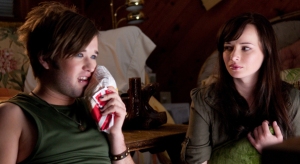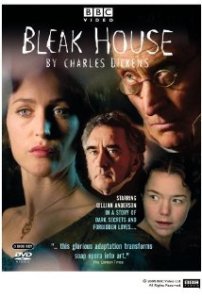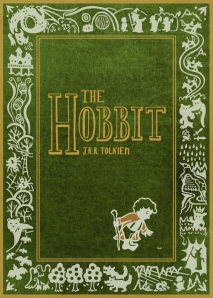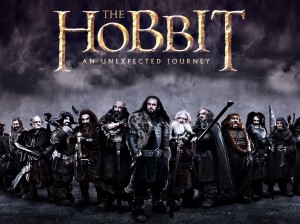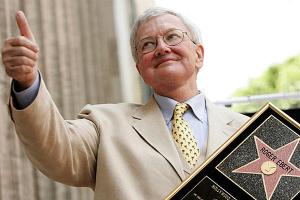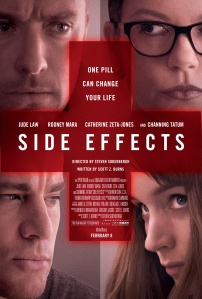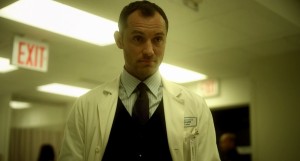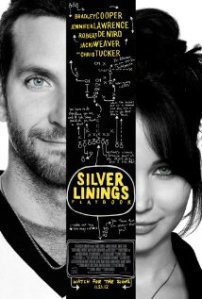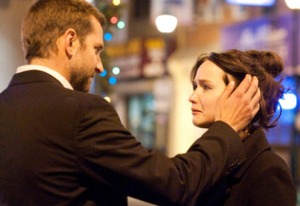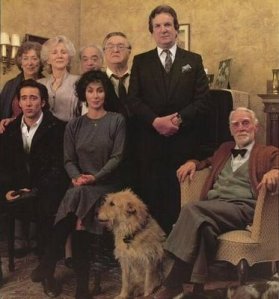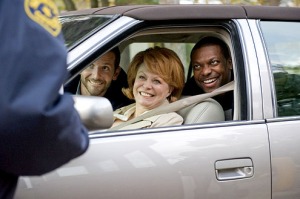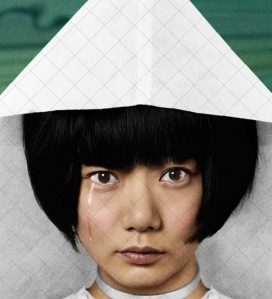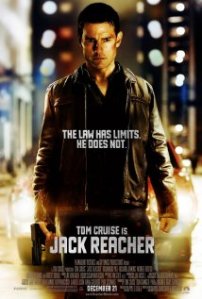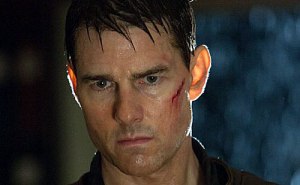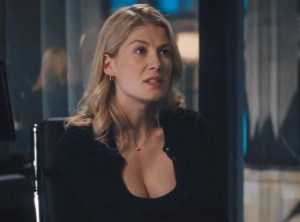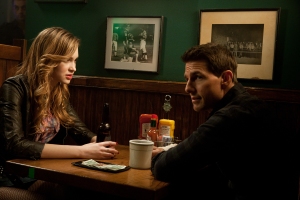In honor of Pride Weekend here in Chicago, I took a look over the last few days at some of the movies Netflix categorizes as Gay and Lesbian. Perhaps not surprisingly, most of them featured a straight main character who has an over-the-top gay friend. Sassy Pants, for example, is about a young woman breaking free of her overprotective mother’s neurotic clutches. It is grouped with gay cinema because the protagonist’s father left his family for another man (played by Haley Joel Osmont, a long way from seeing dead people in The Sixth Sense). However, it doesn’t say anything about gay culture except: OMG having a gay bestie to sashay around the mall with is awesome, for realsies!!1!
Of course there is nothing wrong with a film featuring a gay character surrounded by straight folks. The problem is that so many of those gay characters fall into safe stereotypes. Every cute heroine searching for love needs a gay buddy who gives sassy advice! And how many times have we seen the hero’s runt of a sidekick threatened by a butch lesbian in a seedy bar?
Gay people! They are defined by their sexual preference, and it is pure komedy.
However there are a few jewels in the rough. I have known of Kissing Jessica Stein for several years, but this was my first viewing. To my delight, it is a quirky, intelligent comedy driven by two extraordinary performances– Heather Juergensen as the confident, adventurous Helen and Jennifer Westfeldt (Ira and Abby, Friends with Kids) as the rule abiding, borderline neurotic Jessica.
Jessica is a copy editor who is unlucky in love, mainly because she detests even the smallest imperfections in her dates. She has only ever dated men, so when she answers a “woman seeking woman” ad (because it quotes her favorite poet Rainer Maria Rilke) she doesn’t tell her friends or family. The ad was placed by Helen, who has many male lovers but who wouldn’t mind adding a woman to the mix. The two quickly strike sparks. Helen is certainly the aggressor while Westfeldt gets a lot of laughs from her depiction of Jessica’s wishy-washy approach to a lesbian relationship. She’s like a little kid at a swimming pool: dip one toe in and then yank it back right away.
 Eventually they consummate their relationship, but still all is not well. I was reminded of a letter in Dan Savage’s column in which a straight young man complained that as much as he tried to be receptive to a same-sex relationship in the name of open-mindedness, he could not become sincerely attracted to another man. Savage’s response was simple: you are straight. You can be open-minded all you want, but at the end of the day you are still a straight man. This is also Jessica’s problem. She has a strong connection to Helen, to be sure, but she isn’t a lesbian, not really. In one of the best scenes in the movie, she tries to describe her and Helen’s relationship to a coworker, and while she can easily list all of Helen’s wonderful qualities, she trails off saying “But she’s skinny and she has skinny arms, and it’s just all wrong, wrong, wrong.” She loves Helen, but she can’t love her in the right way.
Eventually they consummate their relationship, but still all is not well. I was reminded of a letter in Dan Savage’s column in which a straight young man complained that as much as he tried to be receptive to a same-sex relationship in the name of open-mindedness, he could not become sincerely attracted to another man. Savage’s response was simple: you are straight. You can be open-minded all you want, but at the end of the day you are still a straight man. This is also Jessica’s problem. She has a strong connection to Helen, to be sure, but she isn’t a lesbian, not really. In one of the best scenes in the movie, she tries to describe her and Helen’s relationship to a coworker, and while she can easily list all of Helen’s wonderful qualities, she trails off saying “But she’s skinny and she has skinny arms, and it’s just all wrong, wrong, wrong.” She loves Helen, but she can’t love her in the right way.
Kissing Jessica Stein is not a perfect movie. The emotional impact of Jessica’s and Helen’s breakup (which of course must happen) is alleviated way too soon when the next scene shows them happily chatting away about Jessica’s new male love interest. As far as I’m concerned, breakups are hard enough. It must be even harder when you break up because one of you is not engineered to be attracted to the other. It feels unnatural to see the two women as good friends immediately after they stop being lovers. But before that disappointing conclusion, the film features many thoughtful conversations about love, sex and what it means to be straight/gay/bisexual/curious.
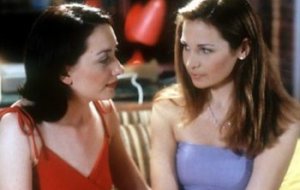 Above all, Kissing Jessica Stein is a worthwhile movie because it showcases characters who are not defined by their sexuality. Yes, Helen is a bisexual woman. She is also a smart, funny and self-confident art gallery owner. Likewise, her gay coworkers are not limp wristed stereotypes but well-spoken, intelligent people who see the difficulties in Helen’s and Jessica’s relationship long before they do. They feel well-rounded enough that another film could be made about their work at the art gallery instead of their sexual preferences, and it would still be interesting. This is what sets this film apart from movies like Chasing Amy.
Above all, Kissing Jessica Stein is a worthwhile movie because it showcases characters who are not defined by their sexuality. Yes, Helen is a bisexual woman. She is also a smart, funny and self-confident art gallery owner. Likewise, her gay coworkers are not limp wristed stereotypes but well-spoken, intelligent people who see the difficulties in Helen’s and Jessica’s relationship long before they do. They feel well-rounded enough that another film could be made about their work at the art gallery instead of their sexual preferences, and it would still be interesting. This is what sets this film apart from movies like Chasing Amy.
So a slightly belated Happy Pride Month to everyone out there! May you find love in all the right places with nary a word being said against you.

